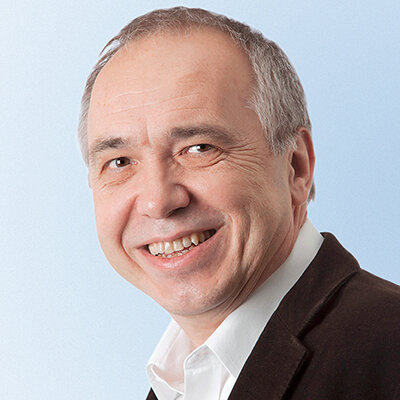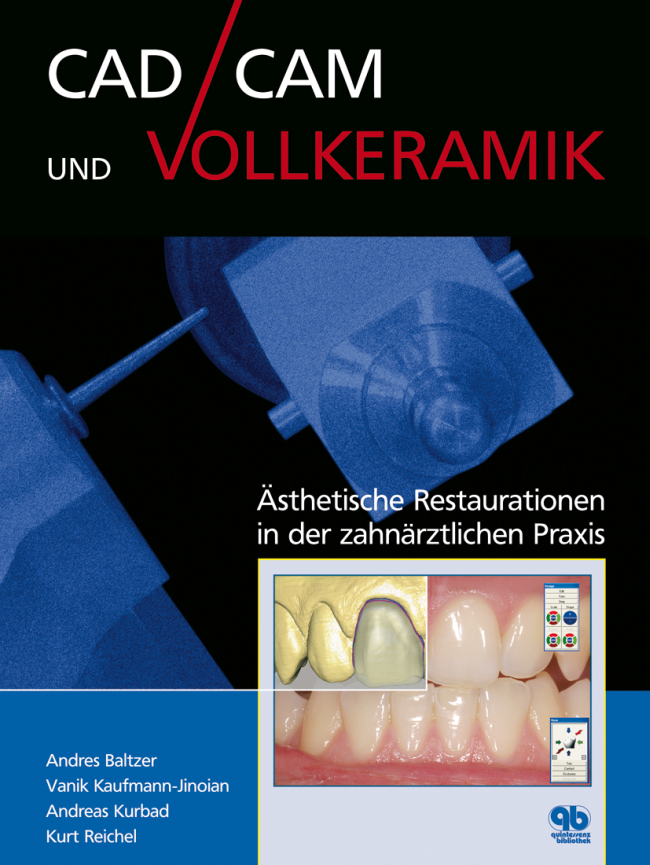International Journal of Computerized Dentistry, 2/2020
EditorialID de PubMed (PMID): 32555763Páginas 103-105, Idioma: Alemán, InglésKurbad, AndreasInternational Journal of Computerized Dentistry, 2/2020
ApplicationID de PubMed (PMID): 32555768Páginas 149-160, Idioma: Alemán, InglésKurbad, AndreasDurch den Einsatz neuster digitaler Technologie vollzieht sich ein grundlegender Wandel in der diagnostischen Planung. Auf Mobilgeräten basierte Apps wie zum Beispiel IvoSmileR (Fa. Ivoclar Vivadent) sind unter Einsatz der erweiterten Realität in der Lage, Therapieentscheidungen unter Berücksichtigung des "informed consent" nachhaltig zu verbessern. Dabei erweitern sich neben einer deutlichen Arbeitserleichterung und der Einsparung von Ressourcen die Möglichkeiten interaktiver Kommunikation. Weitere Fortschritte in dieser Technologie werden auch die Integration der Designergebnisse in den finalen Herstellungsprozess revolutionieren.
Palabras clave: Smile Design, Ästhetik, digital, Veneer, Augmented Reality, Therapieplanung
QZ - Quintessenz Zahntechnik, 2/2019
ErfahrungsberichtPáginas 200-211, Idioma: AlemánKurbad, AndreasDie Fräsbarkeit ist entscheidend für CAD/CAM-Materialien. Sie können unterschiedlich gut subtraktiv bearbeitet werden und unterscheiden sich in ihrer Biegefestigkeit und Ästhetik. In dem Beitrag werden verschiedene Materialien, wie Keramik, Zirkonoxid, Polymere, Komposit und Hybridkeramik vorgestellt und ihre Bearbeitungsmöglichkeiten sowie ihr ästhetisches Potenzial erörtert. In einem Fallbeispiel geht es um den Ersatz einer VMK-Krone durch eine Krone aus ästhetischem Zirkonoxid der dritten Generation (Katana, Kuraray Noritake).
Palabras clave: CAD/CAM, Keramik, Zirkonoxid, Polymer, Komposit, Hybridkeramik
QZ - Quintessenz Zahntechnik, 2/2019
StatementPáginas 242-243, Idioma: AlemánRebbe, Tom / Hopp, Michael / Stachulla, Gerhard / Kurbad, AndreasExperten zu ihren Erwartungen zur IDS und ihren Forderungen an die DentalbrancheInternational Journal of Computerized Dentistry, 1/2019
ID de PubMed (PMID): 30848258Páginas 99-112, Idioma: Alemán, InglésKurbad, AndreasDer digitale Inhouse Workflow besteht aus den Komponenten optischer Abdruck, computergestütztes Design und maschinelle Fertigung. Im Sinne eines zeitoptimierten Workflow erweisen sich abgestimmte, geschlossene Systeme als die bessere Lösung. Die Firma 3Shape (Kopenhagen, Dänemark) hat den bereits etablierten Trios Intraoralscanner um die Softwarekomponente Trios Design Studio und eine Reihe von 'Trusted connection mills' erweitert. In Kombination mit einer Zusammenstellung von 'Trusted materials' kann letztlich ein schneller Workflow mit hoher klinischer Sicherheit gewährleistet werden. Damit eine einzeitige Inhouse Restauration erfolgreich abgeschlossen werden kann, empfiehlt sich eine gründliche Diagnostik und Vorbehandlung, eine an der maschinellen Fertigung ausgerichtete Präparation mit sauberer Darstellung der Präparationsgrenzen, ein kompetent organisierter Fertigungsprozess und eine, meist adhäsive, zielorientierte Befestigungsstrategie. Einzelne Abschnitte des Arbeitsablaufes sind an das speziell und umfassend geschulte medizinische Fachpersonal delegierbar. Durch die zunehmende Vernetzung digitaler Prozesse entstehen sehr nützliche Synergieeffekte wie eine Visualisierung möglicher Therapieergebnisse, Verlaufskontrolle, Smile-Design und die Planung vom Implantatversorgungen. Ein klinischer Fall einer einseitigen Inhouse Versorgung mit drei Seitenzahnkronen wird vorgestellt.
Palabras clave: Intraoralscanner, CAD/CAM, Chairside, Inhouse Workflow, digital Dentistry, Milling
International Journal of Computerized Dentistry, 1/2018
ID de PubMed (PMID): 29610781Páginas 57-70, Idioma: Inglés, AlemánKurbad, AndreasWhen determined by conventional jaw relation recording methods, the real position of the condyle remains largely unclear because the geometric relationship between the reference point and the position of the condyle is unknown. Sicat Function combines cone beam computed tomography (CBCT) data with digital jaw motion tracking (JMT) data and digital intraoral surface data. It is thus capable of measuring and visualizing patient-specific jaw movements. The corresponding patient-specific treatment position can be defined and integrated in various therapeutic appliances, eg, repositioning splints designed to increase the vertical dimension of occlusion (VDO).
Palabras clave: CAD/CAM, cone beam computed tomography (CBCT), jaw motion tracking (JMT), jaw relation recording, mandibular movement
QZ - Quintessenz Zahntechnik, 2/2017
EditorialPáginas 121-122, Idioma: AlemánKurbad, AndreasInternational Journal of Computerized Dentistry, 2/2017
ID de PubMed (PMID): 28630960Páginas 201-213, Idioma: Inglés, AlemánKurbad, AndreasTechnology, integration, and workflowChairside computer-aided design/computer-aided manufacturing (CAD/CAM) technology requires an effective technical basis to obtain dental restorations with optimal marginal accuracy, esthetics, and longevity in as short a timeframe as possible. This article describes a compact, 5-axis milling machine based on an innovative milling technology (5XT - five-axis turn-milling technique), which is capable of achieving high-precision milling results within a very short processing time. Furthermore, the device's compact dimensioning and state-of-the-art mode of operation facilitate its use in the dental office. This model is also an option to be considered for use in smaller dental laboratories, especially as the open input format enables it to be quickly and simply integrated into digital processing systems already in use. The possibility of using ceramic and polymer materials with varying properties enables the manufacture of restorations covering all conceivable indications in the field of fixed dental prosthetics.
Palabras clave: CAD/CAM, milling unit, software, dental materials
International Journal of Computerized Dentistry, 1/2017
ID de PubMed (PMID): 28294209Páginas 93-105, Idioma: Inglés, AlemánKurbad, AndreasComputer-assisted technologies open up new possibilities for significantly improving the planning and realization of implant-supported dental restorations. Three-dimensional (3D) data acquired with an intraoral sensor can be merged with comparable data acquired by various radiographic imaging techniques. Implant planning with this type of support can generate data for the manufacture of surgical guides for dental implants. The guides can then be fabricated either by a third-party provider or by the implantologist directly, by using time- and cost-saving in-office systems. The use of surgical guides can improve the surgical implantation procedure considerably, and successful and reliable outcomes can be achieved more quickly.
Palabras clave: dental implantology, CAD/CAM, guided surgery, surgical guide, cone beam computed tomography (CBCT), implant planning
International Journal of Computerized Dentistry, 3/2016
ID de PubMed (PMID): 27644182Páginas 257-279, Idioma: Inglés, AlemánKurbad, AndreasThe use of materials with elastic properties for the fabrication of dental implant superstructures seems to be a promising way to reduce the functional occlusal forces on implants. Vita Enamic (Vita Zahnfabrik, Bad Säckingen), a hybrid ceramic material for CAD/CAM technology, is available in a special form that can be relatively easily combined with titanium (Ti) base connectors for the fabrication of abutment crowns and mesostructures. Thus, an easily manageable method is available for reducing peak loads on dental implant fixtures. Representative cases are presented to demonstrate the clinical workflows for a single- element solution (Ti base) and two-element solution (Ti base with mesostructure) for implant-supported crowns.
Palabras clave: dental implant, abutment, mesostructure, CAD/CAM, ceramic, hybrid ceramic





